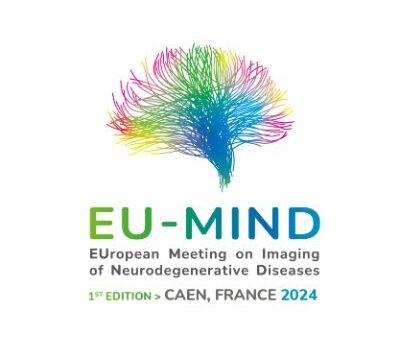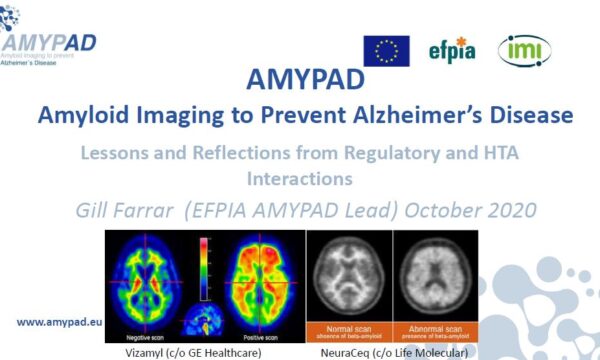The AMYPAD Prognostic and Natural History Study (PNHS) aims at understanding the role of amyloid imaging in the earliest stages of Alzheimer’s disease (AD). It is a prospective, multi‐center, pan‐European, longitudinal cohort study linked to several ongoing European Parent cohorts, aiming to recruit up to 2000 subjects, aged 50 years or older, and not demented.
The study design of the PNHS has been published in the journal Alzheimer’s & Dementia. The paper entitled “Quantitative amyloid PET in Alzheimer’s disease: the AMYPAD prognostic and natural history study” can be found here: https://doi.org/10.1002/alz.12069
“The AMYPAD Prognostic and Natural History Study (PNHS) is, to our knowledge, one of a kind as it by design leverages several European Cohorts in order to provide amyloid PET scans to a large number of individuals undergoing Alzheimer-related research. From this collaborative framework, AMYPAD PNHS is based on extensive data sharing between projects so that all can achieve their unique and joint objectives efficiently and without further burdening participants. The overall design is simple, but will entail large scale data harmonization efforts. Since its publication, the number of sites and cohorts involved in AMYPAD PNHS has grown – for up-to-date information one is always referred back to the website, where the complete list of Sites and Cohorts is always available.”, said Isadora Lopes Alves
Abstract:
Introduction: The Amyloid Imaging to Prevent Alzheimer’s Disease (AMYPAD) Prognostic and Natural History Study (PNHS) aims at understanding the role of amyloid imaging in the earliest stages of Alzheimer’s disease (AD). AMYPAD PNHS adds (semi‐)quantitative amyloid PET imaging to several European parent cohorts (PCs) to predict AD‐related progression as well as address methodological challenges in amyloid PET.
Methods: AMYPAD PNHS is an open‐label, prospective, multi‐center, cohort study recruiting from multiple PCs. Around 2000 participants will undergo baseline amyloid positron emission tomography (PET), half of whom will be invited for a follow‐up PET 12 at least 12 months later.
Results: Primary include several amyloid PET measurements (Centiloid, SUVr, BPND, R1), and secondary are their changes from baseline, relationship to other amyloid markers (cerebrospinal fluid and visual assessment), and predictive value of AD‐related decline.
Expected impact: Determining the role of amyloid PET for the understanding of this complex disease and potentially improving secondary prevention trials.



